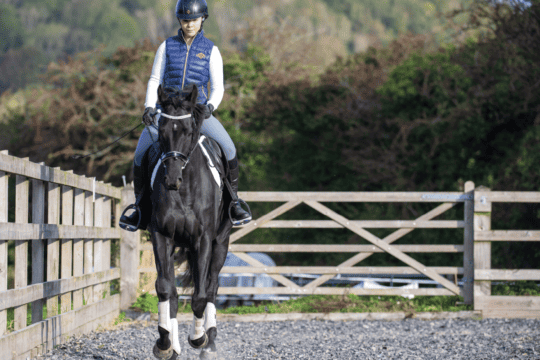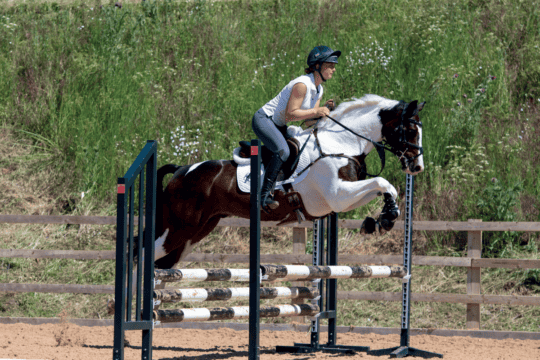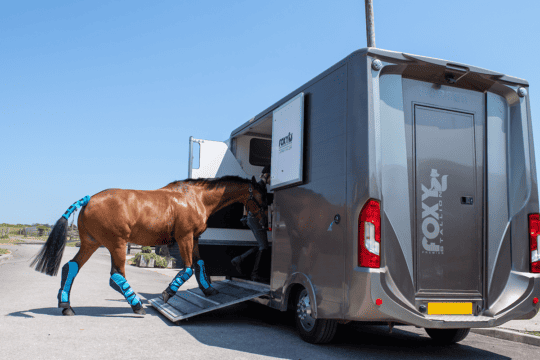-
Riding Schooling and Training
-
Health and Veterinary
-
Management
-
Mind Matters
-
Buying and Selling
-
Insurance Advice
FAQs
There are many reasons why your horse might lack suppleness and it can really affect how he feels to ride. Dressage rider Gareth Hughes explains how to get your horse bending beautifully
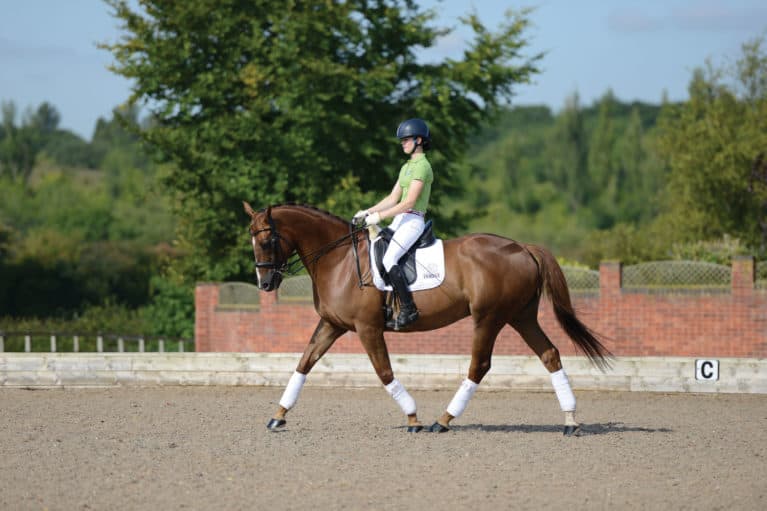
Like us, some horses are naturally more supple than others, but all horses can bend to a degree. When a horse lacks suppleness, he usually lacks bend around his rider’s leg, however, many riders think that the lack of suppleness stems from the neck. This is because they find it difficult to bend their horse’s neck when they’re riding, but often when they get off, their horse has no problem reaching round to scratch his side, so you can see that, in reality, the neck is rarely the cause of the problem. When your horse is supple, he is able to bend easily, and he’ll work through his back and move fluidly without tension. If you feel your horse is lacking suppleness, the first thing I’d suggest is to make sure he is balanced, engaged and carrying himself. This will soften him around your leg and make him easier to ride, and often improves the situation greatly. If, once you’ve achieved that, suppleness still seems to be an issue, then there are some exercises you can do to help improve it.
Lacking suppleness?
If you’re unsure whether your horse is supple or not, consider whether these things happen when you ride…
- your horse becomes tense and resistant while working in the school
- your horse finds something easy on one rein, but really difficult on the other rein
- your horse falls in or out through his shoulders when riding lateral movements or turns
If he does any of these things or just generally feels reluctant to soften and bend, then it’s likely he needs some work on his suppleness.
Lateral work is your friend
One of the best things for creating suppleness in your horse is lateral work, and the most useful movements are shoulder-in, leg-yield and travers. If your horse is finding a movement difficult, keep the angle of the movement shallow and if you’re flexing his neck, exaggerate the neck positioning. This will make it easier for your horse.
If he struggles to give you any angle in shoulder-in and travers, try riding the movement on the three-quarter line instead of the track. This will prevent him relying on the side of the school and he’ll have to start listening to your aids more.
Exercise 1 – Shoulder-in on a circle
Riding shoulder-in on a circle is a really useful exercise for suppling. The act of having to turn while riding shoulder-in brings your horse’s shoulder in round your inside leg. He’ll find it difficult initially, but when you go back to riding him straight, you’ll really feel the difference – he’ll be much more supple.
In trot, ask for shoulder-in down the long side, then at E or B ride a 20-metre circle, maintaining the shoulder-in. Ride a few circles, then trot out of the circle and go large around the arena. He’ll feel much more supple through turns.
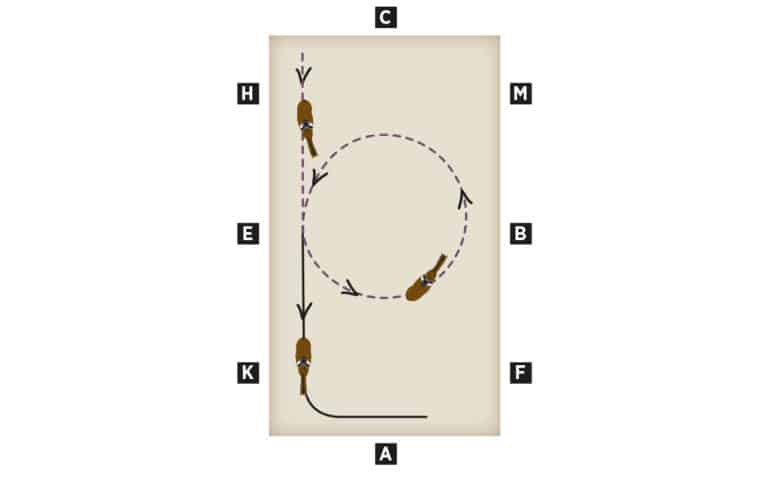
Exercise 2 – Angling the leg-yield
I do a lot of leg-yield work with my horses, as it really encourages them to swing their inside hindleg across under their bodies. This is essential because unless your horse steps under with his inside hindleg, he can’t take more weight behind and bend through his body in a balanced way.
Ride leg-yield across the diagonal, riding a shallow leg-yield initially, then increasing the angle for a few strides to get him to really step across, before returning to a shallow angle again.
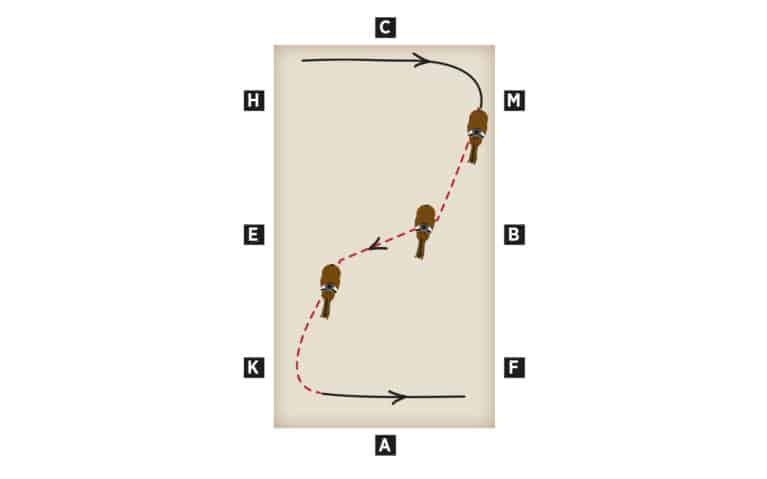
Exercise 3 – Leg-yield away from the leading leg
This is an excellent exercise for a horse who is tight through his ribcage, as it will help him to soften around your inside leg.
Ask for canter and turn down the centre line, then leg-yield back to the track away from the direction of the leading leg. For example, if you’re cantering on the right canter lead, leg-yield to the left.
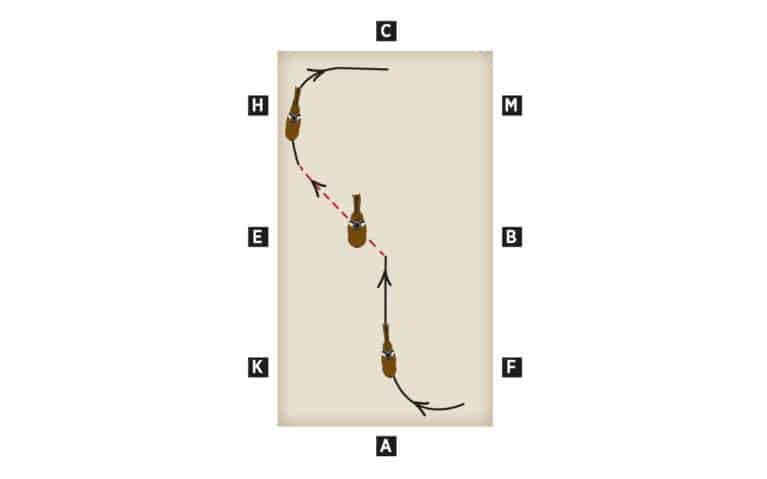
Exercise 4 – Travers on a circle
Riding travers in canter on a circle is fantastic for creating suppleness in the canter. Performing this movement on a circle is easier than riding it on a straight line and it gives you more control, too.
Ask for canter as you approach the long side, then ask for travers. When you get to B or E, ride a 20-metre circle while maintaining travers.
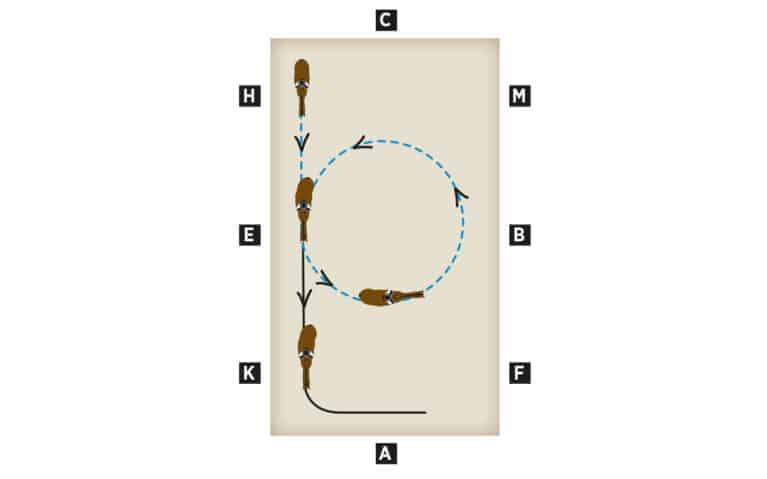
Top tip
Always work evenly on both reins, but remember that you might have to make the exercise slightly easier on your horse’s difficult rein.
A worthwhile task
It’s worth spending time working on suppleness, as not only will it be hugely beneficial to your horse and improve your dressage marks, but it will also make him more comfortable to ride. Before and after a session focused on improving how supple he is, ride some easy, basic school movements, such as circles and serpentines. You should really feel how much better his is at the end of the session.




